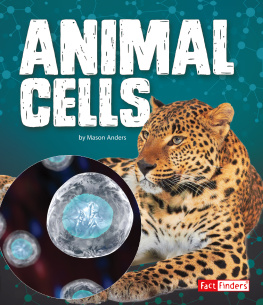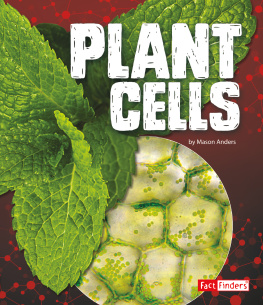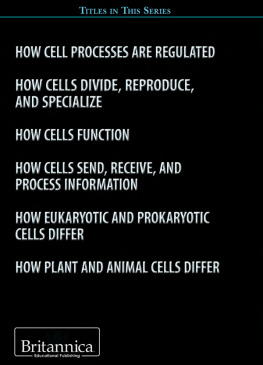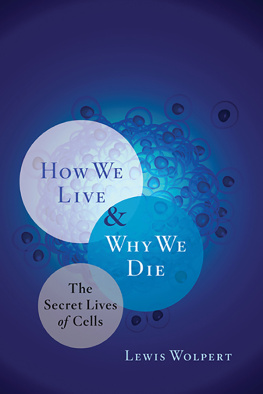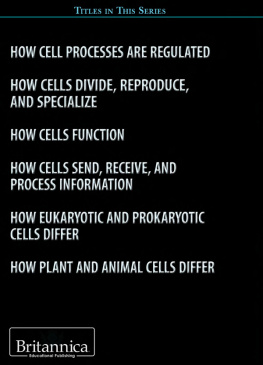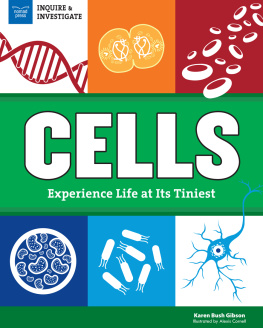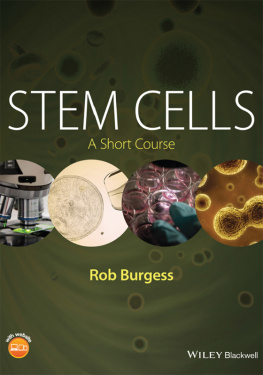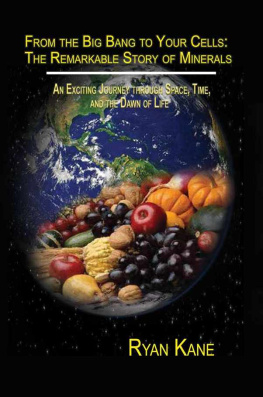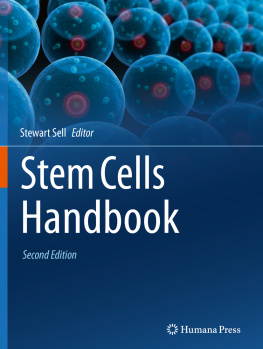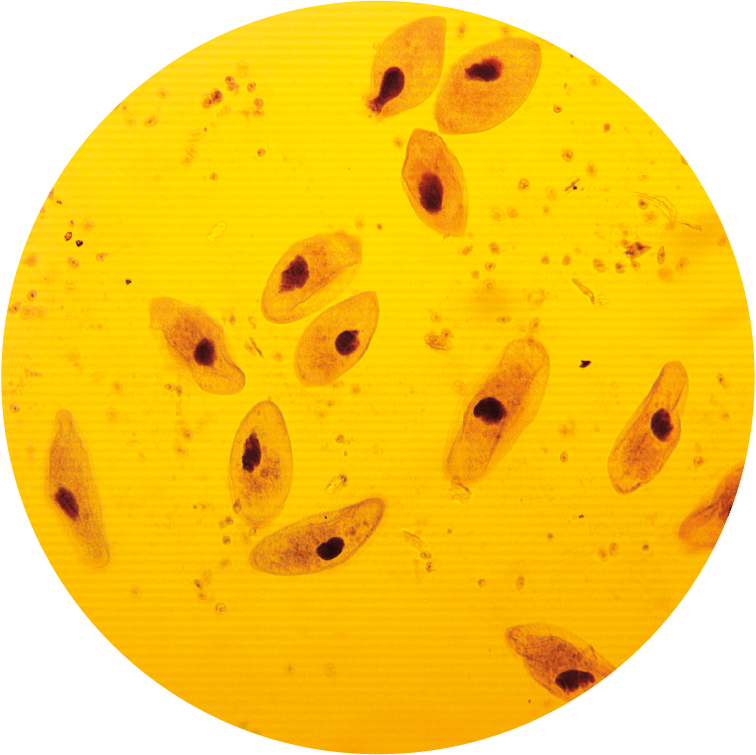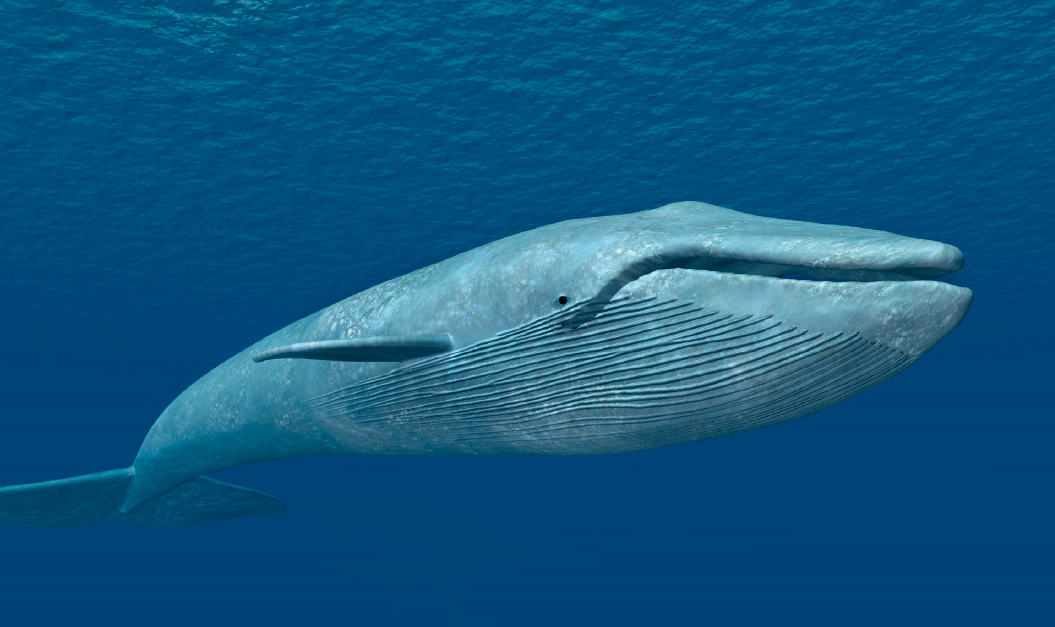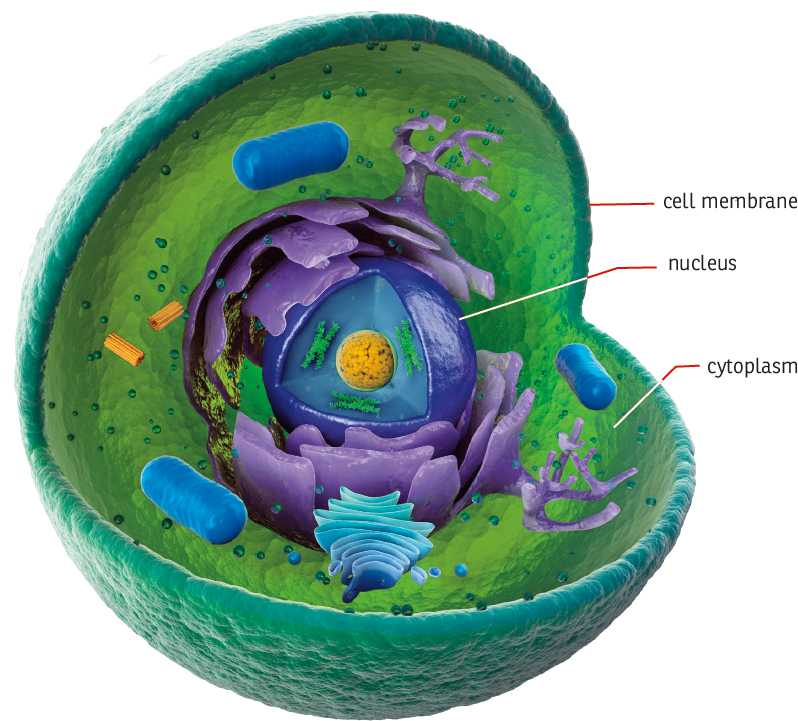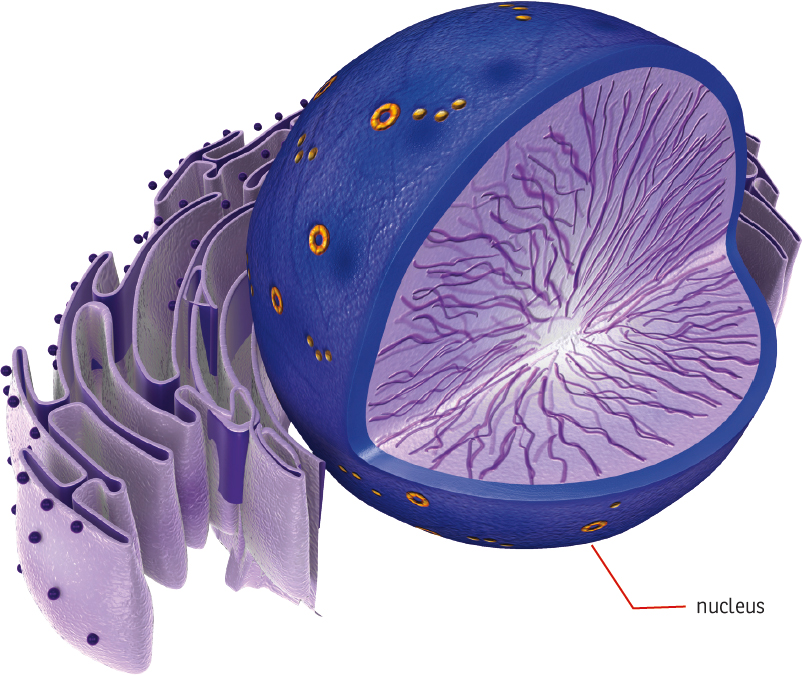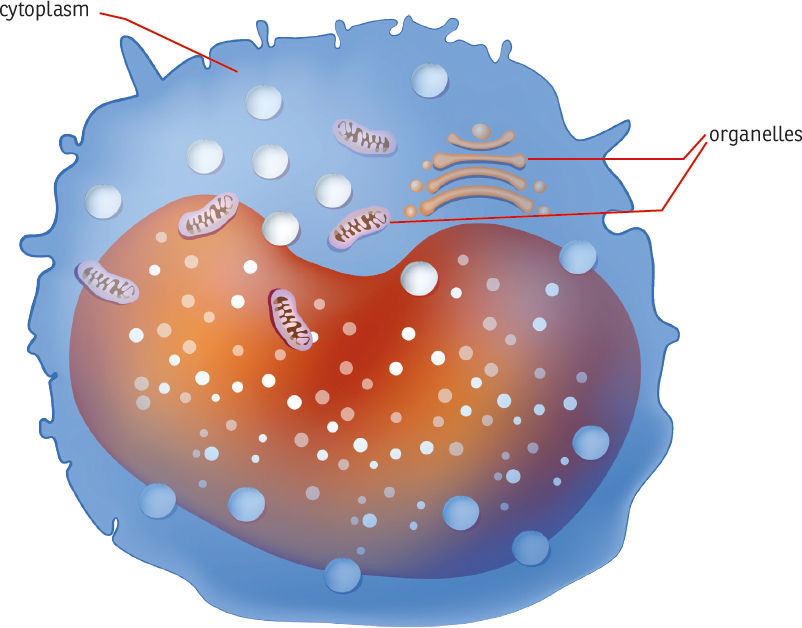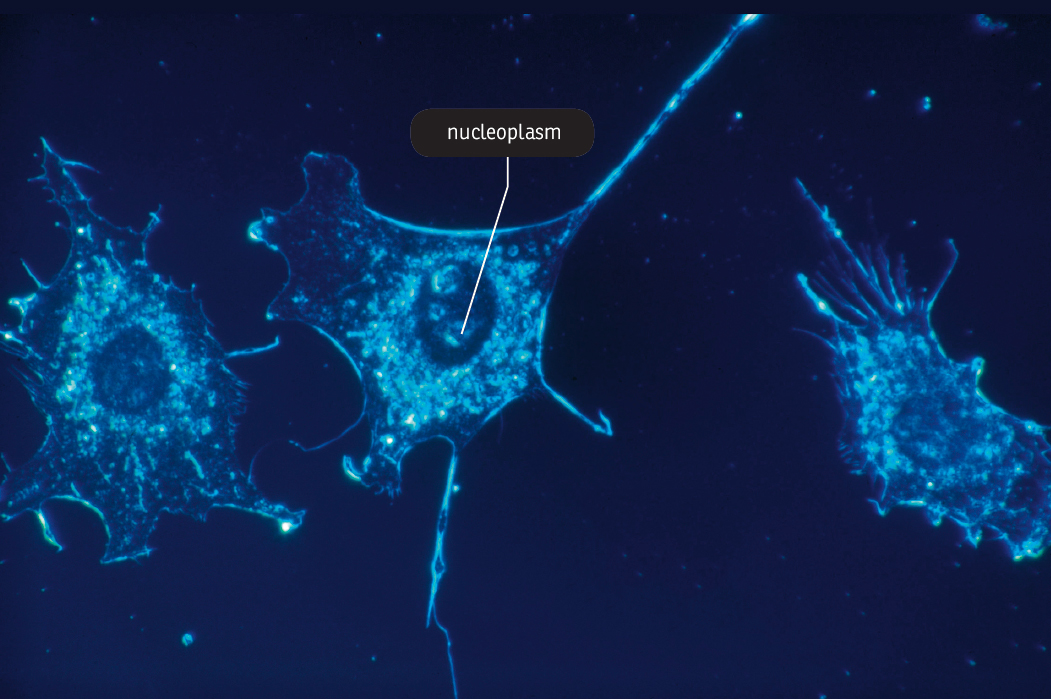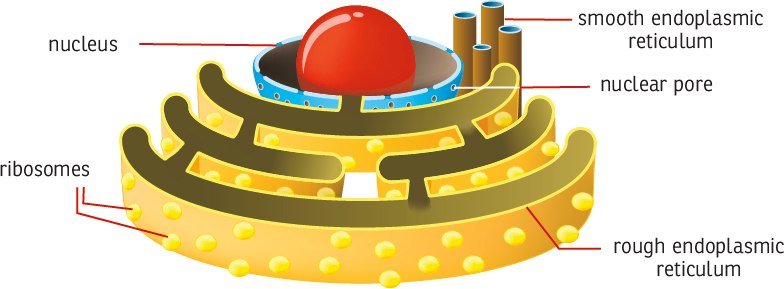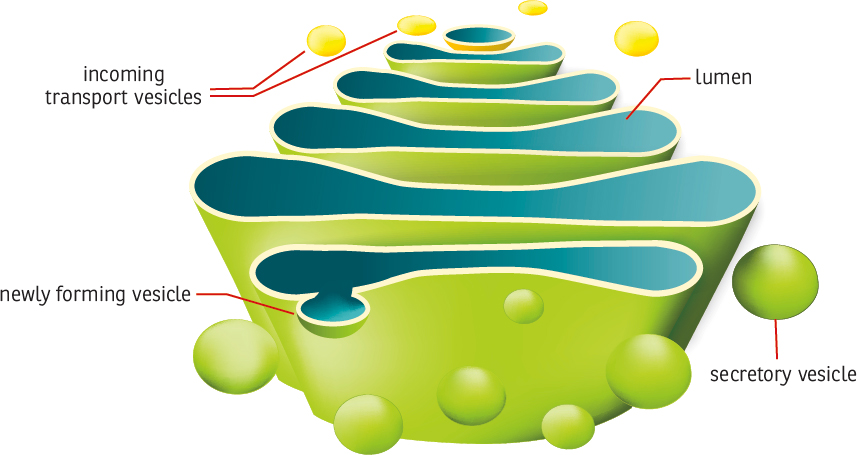CHAPTER 1
What Is an Animal Cell?
A butterfly wing. A fish scale. A humans beating heart. Each part of every organism is made up of tiny cells. A cell is the smallest unit of life. Most cells are so tiny you need a microscope to see them.
animal cells under high magnification.
The bigger the animal, the more cells it has. Some organisms, such as bacteria, are made up of just one cell. A human body is made up of 60 trillion to 100 trillion cells. The blue whale, the largest animal that has ever lived, contains the most cells. It has about 1,000 times as many cells as a human being.
Blue whales have approximately 100 quadrillion cells.
A cell provides the basic structure and function for every living thing. Each animal cell works 24 hours, 7 days a week. It takes in food and gives off waste products. Cell work is responsible for all the life processes that keep animals alive and healthy.
CHAPTER 2
Parts of an Animal Cell
An animal cell has three main parts: the cell membrane, the nucleus, and the cytoplasm.
Cell Membrane
A cell membrane acts like the skin of the cell. It holds the cell together. It also acts as the cells security system. The membrane has tiny openings that allow substances to pass through. The membrane only lets in what the cell needs to live, such as water and food. It only lets out wastes and other chemicals the cell does not need.
The cell membrane lets substances such as proteins and carbohydrates pass in and out of the cell.
Nucleus
The nucleus is the cells command center. Every part of the cell gets instructions from the nucleus.. DNA is like an instruction manual or a blueprint. It contains a code for all the functions of a cell. DNA determines thousands of characteristics about an animal or person, such as sex, skin color, height, and more. It is what makes each species and each individual animal unique.
The nucleus is surrounded by a nuclear membrane. Tiny pores in the membrane let some substances pass in and out. However, DNA never leaves the nucleus. Information carried by the DNA is coded onto another molecule called , or RNA. RNA is like a messenger. It can leave the nucleus. RNA carries DNAs instructions into the rest of the cell.
FACT
DNA molecules bundle into . Each chromosome is made of thousands of genes. Each species has a different number of chromosomes. A human has 46 chromosomes.
Each cell nucleus holds a complete set of DNA the instruction manual for the entire animal. In other words one persons or animals skin cell and a blood cell both carry the same DNA. In that case, how can those two cells be so different? Each cell is reading just part of the instruction manual. It only follows certain genes in the nucleus.
Cytoplasm
Cytoplasm is a jellylike fluid that surrounds the nucleus. It fills the rest of the cell. Stiff fibers stretch across the cytoplasm. These make up the cells cytoskeleton. Cells do not have a fixed or rigid structure, like a real skeleton. But the hairlike fibers give shape to the cell and help it move. float inside the cytoplasm.
Monocytes are a type of white blood cell. Blood cells are a type of animal cell.
NUCLEOPLASM
While cytoplasm is the fluid that fills a cell around the nucleus, there is another type of fluid within the nucleus itself. This fluid is called nucleoplasm. It is made of water, molecules, and dissolved ions. It is very sticky.
The nucleoplasm is a suspension fluid it holds the nucleus and chromosomes. Besides supporting the structure of the nucleus, the nucleoplasm dissolves enzymes and other substances. It also aids in transporting materials that are vital to the cell.
Nucleoplasm is not always present inside the nucleus. When a cell divides, the cell membrane dissolves, and the nucleoplasm is released. After a cell nucleus forms again, nucleoplasm fills the space once again.
Nucleoplasm is also known as karyoplasm.
CHAPTER 3
Organelles
Each organelle does a specific job. Most animal cells have three main organelles. They are the endoplasmic reticulum, the Golgi apparatus, and the mitochondria. These three organelles do most of the cells work. Other organelles remove waste and provide storage.
Endoplasmic Reticulum
The endoplasmic reticulum (ER) is where new molecules are made. There are two kinds of ER smooth and rough. Smooth ER is a series of folded membranes. One of its jobs is to make substances called lipids, also known as fats. These molecules store energy, build cell parts, and send messages.
The surface of rough ER is covered with bumps called ribosomes. Following instructions from DNA, ribosomes help link important molecules called proteins. A cells proteins affect what it is like and what it can do. Proteins are the building blocks for many things a cell needs.
Golgi Apparatus
Once the ER makes molecules, the Golgi apparatus decides what to do with them. It may keep proteins to be used somewhere within the cell. It may also send the proteins out to be used by other cells.
The Golgi apparatus is the packing and shipping center of the cell. Here important molecules are packaged into membrane-bound pouches. The pouches are sorted depending on where they need to go. Each package has its own address. A chemical tag on the package directs where it should be delivered.
Mitochondria
Mitochondria are the power plants of the cell. Like power plants, they need fuel to work. Mitochondria get their fuel from the food an animal eats. First, the food must be broken down into a form that can enter the cell.
The food an animal eats is first digested. The stomach and intestines break it down into molecules that enter the bloodstream. The most common food molecule is simple sugar, or glucose. The blood then carries glucose to cells everywhere in the body.

